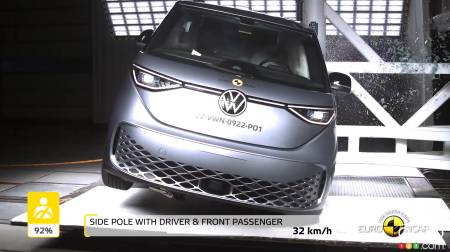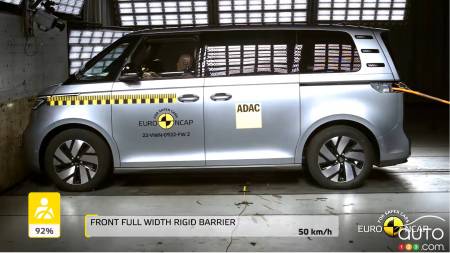- The Volkswagen ID. Buzz has aced an initial series of crash tests in Europe.
- The all-electric van protects its occupants very well in all circumstances.
- The model expected here will be longer and heavier than the European one, but these results bode well for it.
The question of car safety is a priority one for many consumers, so when we hear that an upcoming new model is getting good test results from authorities, it's worth noting. New models are subjected to rigorous crash tests that have only one goal, to ascertain if the vehicle will properly protect occupants in the event of a collision.
The Volkswagen ID. Buzz, which is launching first in Europe ahead of its debut here in 2024, has just come through initial testing conducted in Europe with flying colours. The video shared by Euro NCAP (Europe New Car Assessment Programme) shows us how the vehicle protects its occupants, and it’s very interesting and instructive.
Browse cars for sale available near you

The ID. Buzz used in the Euro NCAP tests was a two-row, short-wheelbase European model. It's a slightly different version of the long-wheelbase variant coming to North America, but the results shouldn’t be very different. It should be noted, however, that our model will be both longer, by 10.6 inches and heavier due to the larger battery size and capacity. The NHTSA (National Highway Traffic Safety Administration) and the IIHS (Insurance Institute for Highway Safety) will conduct tests in the United States.
In Europe, the model received the best possible result with five stars overall. The vehicle scored 92 percent for adult occupant safety, 87 percent for child safety, and 90 percent for Volkswagen's in-vehicle safety assist features.

Not everything is perfect, mind you.
The ID. Buzz scored 60 percent in the category of vulnerable road users, such as pedestrians and cyclists. That’s not great, and it’s attributable to the vehicle's format, which can be particularly damaging to the pelvic areas of pedestrians.
As well, the electric van's automatic emergency braking system failed to prevent the test vehicle from hitting a bicycle-mounted dummy in several scenarios – although, it did score 90 percent on this test.
Of course, we'll have to see how the model performs in North American tests, but overall, it bodes well. Finally, note that the test speeds visible in the video are 50 km/h or 60 km/h.
Perhaps the most fascinating thing is to see how effective the front and side airbags really are in protecting the heads of occupants.
